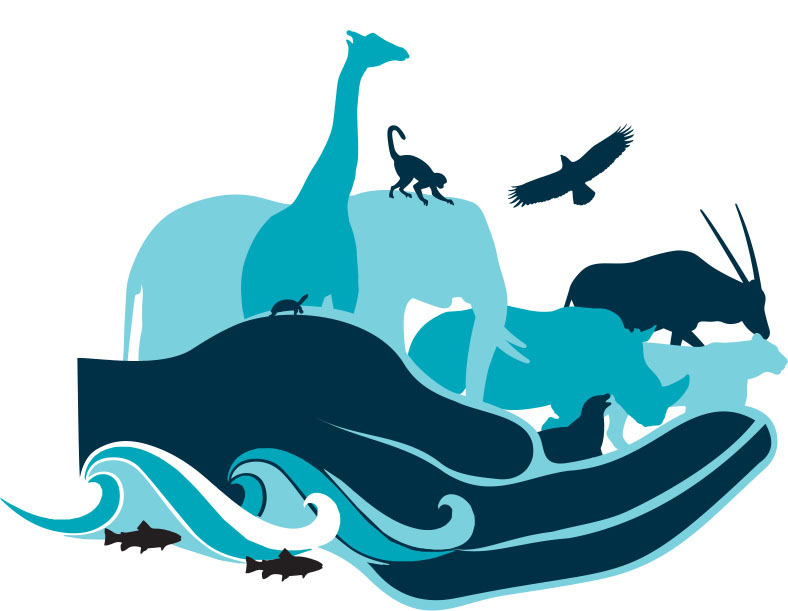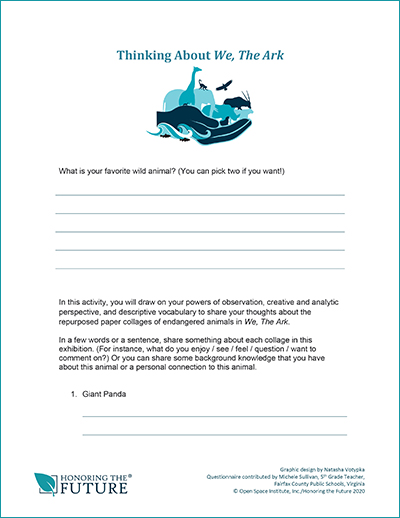We, The Ark: Educator’s Guide
Ask: which images are their favorites – and why? Thinking About We, The Ark (below) may help enliven this discussion.
Encourage students to imagine themselves about to embark on a journey as scientists, explorers, or wildlife photographers. Where would they want to go and why?
Build on students’ interest in art, exploration and discovery with the lesson plans and resources below.
Thinking About We, The Ark is a language arts questionnaire you can download, print, and distribute to students. Invite students to draw on their powers of observation, creative and analytic perspective, and descriptive vocabulary to share their thoughts about the art and animals in the exhibition.
Creating Art While Learning About, And Honoring, Endangered Species Worldwide offers a series of lesson plans to help students deepen their knowledge of endangered species while exploring how to use recycled materials to create their own endangered animal collages. Designed for grades 4-8, the series is easily adapted for older students, with expectations for higher levels of research and quality.
What Do Trees Do For Birds (And Birds Do For Trees)? is a short online article in which ornithologist and science communicator Lauren Pharr introduces the concept of an ecosystem and explains how trees and birds depend on each other to survive. The article can help students understand the importance of forests to healthy animal (and human) populations.
Honoring Trees, our online exhibition, explores the splendor of trees, the challenges climate change and other human stresses pose to trees, and the role humans can play in protecting our global tree canopy. The accompanying Educator’s Guide offers links to 60 of the online resources most likely to spark student interest in trees in their art, science, history, social studies, language arts, and civics classes. The resources include activities students may undertake to help them understand how to rebalance our relationship to nature.
Additional Online Resources:
The following websites offer photographs and information on endangered species:
National Geographic Photo Ark : A database of over 10,000 stunningly beautiful wildlife photographs searchable by species name.
World Wildlife Fund : A species directory listing each animal’s common name and conservation status. Click on the name of any animal for a photo and facts about the animal, its ecological significance, survival threats, and protective measures underway.
Animal Welfare Institute : An easy-to-use directory with photos on the opening page. Click on any photo to be connected to a Wikipedia page with detailed information about the animal. A side bar lists links to brief articles (and photos) on over 30 topics, including What You Can Do to Help.


